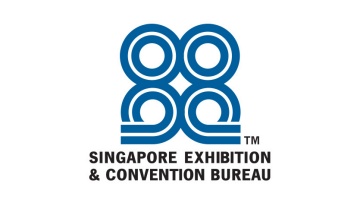
Over the course of just a few months, the Covid-19 pandemic spurred unprecedented changes in our ways of doing business and living our lives. Video conferencing swiftly replaced in-person meetings, while retailers shifted to online delivery, schools pivoted to remote learning and doctors embraced telemedicine.
Although the last year or so has been unprecedented, and should not serve as a template for what is to come, there is a consensus that the digital advancements of this period will remain. As we edge back towards some form of normality, we will be taking its lessons with us.
While we may return to some of the practices that existed pre-pandemic, we will combine them with our new-found digital capabilities. A larger share of our interactions will remain on virtual platforms, and employees may choose to split their working lives between home-working and the office. Flexibility and a newfound ability to deftly navigate between the digital and physical realms will help define the new normal.
Best of both worlds for the MICE sector
Nowhere is this trend clearer than in the meetings, incentives, conferences and exhibitions (MICE) sector, which is gearing up for a rise in hybrid events.
Prior to Covid, the MICE industry’s core value proposition was defined by in-person interaction. Virtual and hybrid conferences did take place, but the opportunity to mingle with others had always been seen as the lifeblood of the sector.
The pandemic, however, forced the industry to adapt to virtual models of operation. Although there have been downsides, there have also been many advantages – not least increasing the reach of conferences and events, and being able to control panel discussions more easily.
Now, as we see the gradual return of business travel, the MICE sector is poised to take a ‘best of both worlds’ approach, moving more firmly towards hybrid models. These provide a mix of physical and virtual conference sessions, and the chance to interact with others via multiple channels. They might also place sessions online for on-demand playback, extending an event’s life cycle. Event organisers can cast a wider net for speakers, sponsors and attendees, but must also re-evaluate what value looks like in the events space.

The model is not new, but our increased levels of digital adoption – and the time the pandemic has afforded organisers to think more creatively – means new possibilities are being explored. A survey commissioned by the Singapore Tourism Board (STB) and the Singapore Association of Convention and Exhibition Organisers and Suppliers (SACEOS) found that 91% of event organisers were looking to subscribe to a hybrid model, 81% of whom acknowledged they were still learning and experimenting with the format.
A case study for hybridisation
Singapore is flying the flag for this model, having introduced an Event Industry Resilience Roadmap (IRR) that provides a blueprint for organisations to follow. Since September, it has been considering events and conferences with up to 250 participants, as part of its plan to reinvigorate the MICE sector. From 24 April, capacity for in-person attendance will rise to 750, with pre-event testing (PET) required for all attendees. For events of 250 and under, PET will not be required for local residents.
“The new roadmap, developed by STB together with SACEOS and Enterprise Singapore, includes a playbook on the rudiments and economics of a hybrid event,” says Dr Edward Koh, executive director of conventions, meetings and incentive travel at STB. “Event organisers should be mindful that hybrid models need to make commercial sense and the hybrid attendee experience has to be engaging.”
One major selling point of the model is the ability to forge larger communities around an event – and to keep them active and engaged long after the event itself has ended. Beyond community building, the IRR defines the key pillars of hybridisation success as being digital engagement; learning opportunities; defining practical outcomes; and commerce.
Already, Singapore has piloted a number of conferences exploring possibilities across these spaces, helping to give a sense of how such events might be run safely and profitably in the new normal. Web in Travel Singapore, which took place between 28 September and 1 October 2020, held its first three days entirely virtually, before moving to a hybrid format on day 4. Delegates arrived at Marina Bay Sands’s new Hybrid Broadcast Studio, which featured a live audience of 40 people.
The trade show TravelRevive took place in November, with close to 1,000 attendees on-site from 14 countries. This was followed by the PCMA Convening Leaders in January, which was hosted outside the US for the first time in 64 years.
“Marina Bay Sands Hybrid Studio was used as the Global Broadcast Centre to beam live content to 3,000 virtual delegates with around 300 live attendees at this event in Singapore,” says Koh. “The venue will use this studio as the central hub for event planners looking to produce hybrid meetings in the new Covid environment.”
Launched in August 2020, the studio offers ordinary webcasting options, but can also accommodate a live audience. It can even provide holographic telepresence – allowing a virtual speaker to appear on the stage, holographically, together with on-site speakers. It creates an immersive, mixed-reality environment for delivering presentations, and has been billed as reimagining the future of meetings.

Adapting to new event formats
Other major hybrid events on the cards include Geo Connect Asia 2021, which takes place in late March. The event is expected to welcome nearly 1,000 business visitors, delegates and speakers on-site, as well as another 1,200 who will participate in a purely virtual capacity. It will be followed by the World Economic Forum special annual meeting in August, and the FTE APEX Asia Expo+ in November, to name just two.
As well as welcoming hybrid events of this kind, STB has launched a Business Improvement Fund, with a view to reshaping the local MICE landscape. It is also encouraging its partners in this space to use this time wisely, treating it as a chance to improve their digital skill base. Approached creatively, hybrid events may be capable of delivering greater quality and engagement than either their physical or virtual predecessors.
“The hybridisation of events will continue long after the threat of the pandemic recedes,” says Koh. “Therefore, it is critical for our industry to pivot and adapt to new event formats and business models. STB is committed to support our industry through this journey.”



